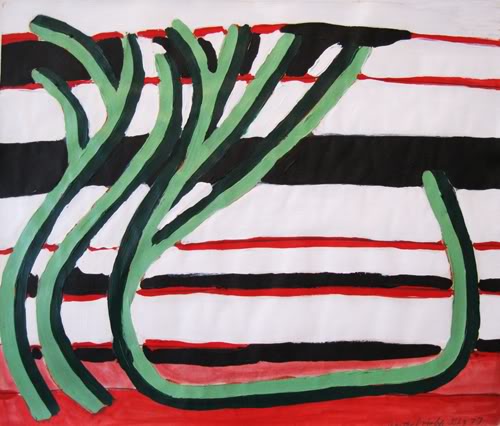An ode to the trees of America
By Summer Edward
I first started going to the river to run. Later I would sit on the grassy bank by the water’s edge and write, or else indulge myself in reveries; but in the beginning it was not inspiration and respite I sought, but exercise and exertion.
I ran in the mornings. From my row house apartment, it was a mere five minute walk to the river. I started out early, before the sun came up. Before, when I lived in another part of Philadelphia, I had visited Fairmount once or twice, and then, it only held the fleeting lure of an excursion. But jogging along Kelly Drive, the Schuylkill flowing beside me, Fairmount became the place where I lived and I began to take an active interest in the lay of the land.
I have always felt a kinship with trees; in truth, most of my proclivities come down on the side of nature. I set this down to a combination of temperament and a childhood spent on a Caribbean island. As I ran along Kelly Drive, looking past the restless human activity to the immemorial habitus of the land, my gaze moving from the sakura trees lining the running trail, to the forests of the Schuylkill hills, I began to look at the trees with real curiosity. I noticed them as individual, living things. As the seasons changed, I saw patterns and routines in the lives of sycamores and poplars, and kept my eye on a venerable box elder near the West River Drive Bridge. I noted which trees lost their leaves by October, and which species held on longer. I saw how trees fought to survive the extremities of a temperate climate. The self-governance of trees is mysterious and moving, though not always elegant.
So it was that running beside the river, I discovered the secret life of American trees. To find that here, a stone’s throw away from Philadelphia’s city center, was this teeming hinterland of wooded life, was a welcome boon in my metropolitan existence, and though I had a clear view of the urban skyline, a cluster of skyscrapers, as I ran along the river — the view that had first attracted me to Fairmount — those towering buildings soon lost their attraction as I gave myself over to a childhood’s lore: the lore of American trees.
One of my earliest introductions to American trees was through the charming vistas of Sesame Street. Growing up in Trinidad as a child, years before I migrated to America, I spent many a hot, dry or rainy, warm tropical afternoon watching the show, and one of the various reasons I was enamoured of Sesame Street — the actual street where Oscar the Grouch lived in his trashcan that is — was that it was lined with trees.
Living on an island, I was inured to a fearsome wildness of trees. Everywhere in an island, even in the cities, the bedlam of nature encroaches; trees grow, bloom and die fiercely wherever they please, untended by human agency. But on Sesame Street, vernal trees, growing at uniform intervals, sprouted duteously from the pavement with all the spruceness of a bellhop standing outside a hotel. Watching Sesame Street as a child, I first saw documentary footage of the Chandelier Tree, a colossal redwood in Leggett, California with a hole cut into the trunk big enough for cars to drive through. We had nothing like it in Trinidad, at least not that I knew of.
From shows like Sesame Street, and other American children’s programmes I enjoyed as a child, I constructed idealized visions not only of tree-lined inner-city American neighbourhoods, but American parks and suburbia as well, and I became utterly convinced of the utopian arboreousness of America. America was not merely one large, civilized pleasure garden where perpetually fresh trees grew in orderly fashion, but American trees were also superior, if only because you could not find them in Trinidad. These were the conclusions of a child’s impressionable mind.
Formally, I was introduced to American trees during geography lessons back in the 90s. Sitting in my high school classroom in Trinidad, I looked at photos of faraway temperate forests in my textbooks. “In the child’s reverie, the image takes precedent over everything elseâ€, Gaston Bachelard wrote. In geography class, as we poured over remarkable photos of national parks like Yellowstone and ecoregions like the Atlantic coastal pine barrens, we did not know what we were looking at, which is to say, we did not know that large portions of the American forests pictured in our books had been afforested or reforested, and we knew nothing of decades of large-scale human interventions in the American landscape. As such, our received idea of American forests was of something entirely produced by nature, without the imprint of civilization.
To a West Indian teenager like myself, the aerial shots of American coniferous forests were especially interesting. There are species of coniferous trees native to Trinidad, but North American conifers, illustrated renditions of which grace the cover of many an imported Christmas card, and the pages of many an imported childhood storybook in the Caribbean, were a part of the imagistic reverie of Trinidadian childhood, and had all the appeal of the exotic. I had seen similar photos of American forests in the ‘Encyclopaedia Britannica’ set my mother bought me, but to learn about them in a classroom alongside my peers added authority to what I knew. Thus, when, as a teen, I belatedly discovered children’s novels like ‘ A Wrinkle in Time’ and Laura Ingalls Wilder’s stories, and fell to picturing the pine forest behind the Wallaces’ house or the Big Woods of Wisconsin, I drew upon those textbook photos of Yellowstone and the Rocky Mountain forests.
Years later, when I left Trinidad and settled in America, whatever knowledge and sentiment I initially had about American trees was deeply tinged with the nostalgia of school days, childhood and Sesame Street. Even my bookish knowledge was tinged with the romance of childhood envy, and when I first moved to Fairmount, I brought romance and nostalgia to my contemplation of the trees I saw on my runs along the river, which is to say, the childhood fantasy of American trees, planted in my imagination while reading books and watching television in Trinidad, now had a real stage to play upon.
But there was also a new vision that unfolded during those runs by the river. In spring, I noticed seed pods littering the trail and stepped around them where I would have trampled them before. The spiky seed pod of a sycamore looks violent, like the striking head of a medieval flail. Many of these seeds are trampled by people or eaten by birds. Still, the sycamore catapults its seed to the proverbial four winds, a blitzkrieg of plant fertility. Such a fierce campaign of survival waged by American trees. The sycamores, still denuded of their leaves in the juvenescence of the year, only looked feeble and inert. Even the breathtaking pageant of the cherry blossom trees in bloom along the river was deceptive. What I had once thought of as an effortless recrudescence, I now saw was a great battle the trees were fighting, vying as they were with the forces of natural selection.
Later in the year, the cherry blossom trees along the trail wore a different aspect. In spring their branches had been buoyant with blossoms, and they had had all the elaborate splendour of a cotillion; but if spring was a cotillion, now, these same trees looked as forlorn as a stag line. These were the dog days of summer and a pall of listlessness hung over the city. Looking at the becalmed trees along the summer river, one got the feeling that they were burdened by their task of providing shade. The leaves had wilted and the branches, which in springtime had been uplifted as though in prayer, now drooped languorously. In the summer, the branches of American trees, laden with stored moisture, often snap and fall, sometimes causing injury to humans and animals. It was another thing that surprised me. I realized I had thought of winter as the tidy death “which nature hath provided.†It was the fanciful notion that all the degenerative processes of American trees were confined to that cold season; otherwise, American trees were somehow a prelapsarian species, immune to the natural world’s curse of decay. Now I saw that Bradstreet’s poetic line “trees do rot when they are grown†could easily have been penned in the summer. So, here too, was another blind spot of the imagination.






[…] “The self-governance of trees is mysterious and moving, though not always elegant.” – read all of Summer Edwards’ descriptive and reflective Fairmont Trees […]